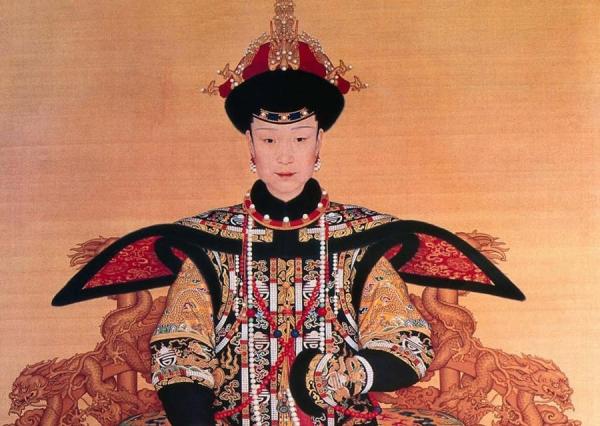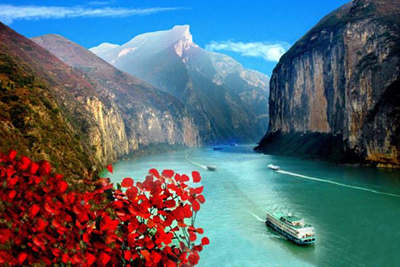Qing Dynasty
The Qing Dynasty (1636-1912) was the last imperial dynasty in Chinese history, with a total of twelve emperors. The dynasty lasted for 276 years since Huang Taiji had changed the regime's name to Qing in 1636. It took another 8 years for the Qing troops to invade the Ming’s territory by entering the Shanhai Pass. In the following years, Qing emperors defeated all their enemies throughout the country and established a national regime with a vast territory, including Mongolia, Xinjiang, Tibet and Taiwan.
On February 12, 1912, the prime minister Yuan Shikai forced the Qing emperor Puyi to abdicate and promulgated the Qing emperor's abdication edict, which ended the rule of Qing Empire. At the same time, Republic of China was established.
Qing Dynasty Facts
In Chinese: 清朝
Time period: May 15, 1636 – February 12, 1912
Capital: Beijing
Population: about 436 million in 1851 during the regime of Emperor Xianfeng
Ethnical groups: more than 50, such as Han, Manchurian, Mongolia, Hui, Tibetan, etc.
First Emperor: Nurhaci, or the second ruler Huang Taiji who named Qing regime.
Last Emperor: Puyi, Emperor Xuantong
During the Qing Dynasty, the territory of the country expanded considerably. A unified multi-ethnic state came into being. As the minority rules, Qing emperors did know how to govern an enormous country. They unified the Mongolian nomadic tribes and included Xinjiang and Tibet into their territory, and actively maintained the integrity of the country's territorial sovereignty. During the Emperor Qianlong’s regime, it was the heyday of Qing Dynasty, China turned into a giant power in the world. The territory of Qing Dynasty expanded to Congling (current Pamir Mountains) and Balkhash Lake in the west, Tannu Uliang Sea in the northwest, Siberia in the north, the Pacific Ocean (including Sakhalin Island) in the east, and Nansha Islands in the south, totaling 13.16 million square kilometers.
In the early Qing Dynasty, agriculture and commerce were well developed, a number of commercial cities appeared in the downstream areas of the Yangtze River, and large business groups appeared throughout the country. Also due to the long term stabilization of society and introduction of food species from outside China like potatoes and sweat potatoes, the population kept rising greatly in the first half of the dynasty, accounting for nearly half of the world's population (approximately one billion around 1800).

Qing Dynasty Emperors – Timeline with Years
| Reign Title | Dynastic Title | Name of the Emperor | Reign Years | Burial Tomb | Remarks |
| Tianming | Qing Taizu | Nurhaci | 10 | Fuling | |
| Tiancong | Qing Taizong | Huang Taiji | 17 | Zhaoling | |
| Shunzhi | Qing Shizu | Fulin | 18 | Xiaoling | |
| Kangxi | Qing Shengzu | Xuan Ye | 61 | Jingling | the longest reigning emperor in China |
| Yongzheng | Qing Shizong | Yinzhen | 13 | Tailing | |
| Qianlong | Qing Gaozong | Hongli | 60 | Yuling | the longest living emperor in China |
| Jiaqing | Qing Renzong | Yongyan | 25 | Changling | |
| Daoguang | Qing Xuanzong | Minnin | 30 | Muling | |
| Xianfeng | Qing Renzong | Yizhu | 11 | Dingling | |
| Tongzhi | Qing Muzong | Zaichun | 13 | Huiling | Dowager Ci Xi attended to state affairs behind the throne |
| Guangxu | Qing Dezong | Zaitian | 34 | Chongling | Dowager Ci Xi attended to state affairs behind the throne |
| Xuantong | Qing Xianzong | Puyi | 3 | None | |
| Long Qing | Ming Mu Zong | Zhu Zai Ji | 6 | Zhaoling Mausoleum | Men of talent come out in succession in the court during Ming Shi Zong's reign. |
Qing Dynasty Art: Literature, Painting, and Porcelain
The literature of Qing Dynasty can be regarded as the culmination of the development of ancient literature in China. Among all the literature forms, novels can embody the features of the period. The Qing Dynasty was the last imperial dynasty in China and the last important stage in the history of ancient literature. The prosperity of novel writing represented the major achievements of Qing Dynasty literature. In terms of quality, the novels independently written by literati in the Qing Dynasty have become very mature. Some outstanding writers greatly improved their ability to observe, understand and summarize life. Literati writers have created a large number of outstanding works, such as "Dream of Red Chamber” of Cao Xueqin, “The Scholars” of Wu Jingzi, and "Strange Stories from a Chinese Studio" of Pu Songling, and so on.
Under the influence of politics, economy, ideology, culture and other aspects at that time, the painting in Qing Dynasty presented a specific style of the times. Scroll paintings have been popular since the previous Yuan and Ming Dynasties. Literati paintings won the popularity, landscape paintings and ink and wash freehand paintings prevailed. We can find a large number of talented painters and their exceptional works in different periods of Qing Dynasty like “the 4 Monks”, “the 4 Wangs”, “Yangzhou School”. Royal palace paintings created by some foreign painters also achieved great development during the Kangxi and Qianlong periods, and presented a new painting style completely different from the traditional Chinese paintings. The number of books and articles on painting art and history exceeded that of any previous dynasties. At the mean time, the folk Lunar New Year pictures and prints flourished in the life of average people.
In the Qing Dynasty, the porcelain production has entered a peak period, which is the second summit in the history of Chinese ceramic development after the Song Dynasty. The accumulation of experience upgraded the design and production of porcelains to a new level. During the regimes of Kangxi, Yongzheng and Qianlong, thanks to the economic prosperity and social stability, porcelain making stepped into a prosperous era. The porcelains made for royal families in Jingdezhen represented the highest level of production in China and even world at that time. The exquisite and gorgeous decoration of porcelain in the Qing Dynasty fully reflected the creativity and imagination of the craftsmen and artisans. Besides, more and more places in the country began to make porcelains for exportation due to the big demand.
Qing Dynasty Achievements & Inventions
The achievements of the Qing Dynasty in the field of science and technology covered military, water conservancy, potato and tomato planting and many other fields of science and technology. Among them, the Qing Dynasty was the most eye-catching for military technology. The first ruler Nurhachi of Manchurian tribes began to give his troops regular artillery training in 1621, and his military workshops could make standard artillery shells. By the time the Qing army entered the Ming’s territory, its military technology and military system had surpassed that of the Ming Dynasty.
The outstanding achievements of herbal medicines were made in Qing Dynasty. For example, the "Golden Mirror of Medicine" revised by the government during the Qianlong period had a total of 90 volumes, which made some revisions and updates based on the old medical books such as "The Synopsis of Prescriptions of the Golden Chamber" and "Treatise on Febrile Diseases", and also collected many new contents. It is a masterpiece introducing the clinical experience of traditional Chinese medicine. In addition, Wang Qingren, a famous doctor in the Qing Dynasty, drew 25 types of pictures on human internal organs based on his anatomical researches, which corrected some mistakes of predecessors and made great contributions to the development of Chinese anatomy.
The astronomy in Qing Dynasty developed rapidly. Mei Wending was engaged in the sorting and elaboration of ancient almanacs all his life, and at the same time, he also studied and introduced Western science. He also edited the country's first almanac history book. In addition, his book "Chinese and Western Mathematics General" almost summed up all the knowledge of mathematics in the world, reaching the highest level of mathematics research in China at that time.
During the reign of Kangxi, the imperial court sent a group of European and Chinese scholars to explore the territory of the empire and conduct the national survey. It took more than 30 years to finish the "Huangyu Panorama Map". It is believed that this map was the best map in Asia at the moment. During the Qianlong period, on the basis of the previous map, the "Huangyu Panorama Map for Inner Palace of Qianlong" was made. This map was the first time that Xinjiang region was drawn and included.
Generally speaking, the Qing government did not want civilians to access and develop new technologies to avoid threatening its rule. They paid no attention to technological inventions and suppressed the expansion of manufacturing workshops, which made China's technology lag far behind the Western World.
Qing Dynasty Clothing: Hairstyles, Dress, Hat, and other Fashion
Once the Manchu people took over power in China, they ordered all Chinese men should adopt the Manchu queue hairstyle (Taoist priests and Buddhist monks were exempt from it). Although it experienced great resistance of the majority Han at the beginning as cutting hair didn’t follow the traditional Confucian teachings. Qing rulers soon cracked down on protests by adopting a harsh policy of “Keeping your hair, or head”. Those who refused to have a queue hairstyle would be sentenced to death.
Since Qing Dynasty was established by ethnic Manchu, they brought some new ideas to the hairstyles of women. In the early Qing Dynasty, most of the Manchu women adopted the simple braided hairstyle, or directly wrapped. After the emergence of the Qi hairstyle (旗头), the hair design kept upgrading, with more and more decorations and bigger sizes.
Qing Dynasty Men Clothing and Hat
The men’s clothes of the Qing Dynasty were usually long robes and mandarin jackets, which were originally worn by those from wealthy or upper-class families only. As the time went on, more and more people accepted it as a common costume, especially for those educated intellectuals.
Qing Dynasty Dress and Shoes for Women
The cheongsam (Qipao) worn by Manchu women was wide and loose in the early days, but later it turned to keep a thin waistline. And a vest could be added to the outside of the cheongsam when necessary. The Manchurian ladies’ shoes are also very special, a kind of platform soled shoes. As for the clothing of Han women, it is similar to that of the Ming Dynasty.
Qing Dynasty Architecture: Yuanming Garden (the old Summer Palace), the Summer Palace, Yonghe Lamasery
The garden architecture of the Qing Dynasty has a very high reputation in the world. For example, Yuanming Garden in the western suburbs of Beijing has more than 150 exquisite palaces, pavilions, pagodas and other buildings. It was constructed from the Kangxi period, and was basically completed during the Qianlong period. It is a pity that the garden was destroyed in 1860 during the Second Opium War, and now there are only some ruins left. The Summer Palace is another royal palace built in Qing Dynasty. In addition, Yonghe Lamasery, the Summer Resort (Chengde) and the Eight Outer Temples (Chengde), Humble Administrator’s Garden (Suzhou) are also Chinese architectural feats built during the period.
A Brief discussion on the Position of Qing Dynasty in Chinese History
Since the second half of 19th century, Qing Empire has experienced the unprecedented challenges from inside and outside. Like any declining empires, the Manchu-established state has been related to a series of negative words like decadency, ignorance, backwardness, weakness, humiliation and unjust treaties. From 1870s, more and more young students went abroad and pursued the further studies in the schools of the Western countries and Japan. Until the early 20th century, these young people with Western educational backgrounds realized the big gap between China and other developed countries. Their articles and criticism have long influenced the Chinese people for almost 100 years. In recent years, some scholars put forth their new thoughts about the positive influence of Qing Dynasty as a state. Perhaps it is time for us to have an objective view towards the last dynasty of China.
First of all, we must realize that the Qing Dynasty was in an international situation when Western countries had initially completed the Industrial Revolution and gradually turned into modern states. Although the rulers of the Qing Dynasty once considered the need to reform and introduce advanced Western technologies, while the most important thing for them was to maintain their rule as long as possible. But it seems obvious that the political system and traditional production methods adopted by the Qing Dynasty at that time were far behind the development of the advanced countries in the world.
Once an empire shows its feebleness and debility, it is vulnerable to challenges and attacks from inside and outside, which led to the poor governing performances in the late Qing Dynasty. It was a conflict between aggressive and advanced Western industrial civilization and conservative, backward Oriental agrarian civilization. The external cause of why the Qing Empire fell was due to the dimensionality reduction attack from the West. Therefore, it cannot be solely regarded as a problem of the Manchu rulers, but a development trend of the world. Even if a Han regime had also encountered such challenges, its response would not be likely to be better than that of the Manchu rulers.
Like any other dynasties, Qing Dynasty made the great contributions to the formation of modern China. Here below, let us see what major legacies it left to this country during its 276-year regime.
In its heyday, the Qing Empire, covering an area of more than 13 million square kilometers, was the dynasty that controlled the largest territory in Chinese history (more than the actual control territory of Yuan Dynasty), and it was also an immense empire at the world level. For the first time, the Qing Empire completely solved the Mongolian threat to the core areas of the country, conferring the high rank titles to those Mongolian aristocrats. Their tribes had their own territories under the leadership of the central government. In this way, the Great Wall failed to play its role as a defensive project, but became a historical relic. Tibet, Qinghai, and Taiwan were included in the Qing’s territory for the first time in a real sense, and the governance over Xinjiang area was also resumed during the Qing Empire.
All the emperors during Qing Dynasty had good upbringing and received strict education. They were very diligent in state affairs, and mostly did not do anything out of line, which is unique in the entire history of China. Besides, the royal families had a relatively frugal life compared with those of former dynasties like Ming, maintaining lower expenditure and a smaller amount of eunuchs in the imperial harem. Compared with the Han rulers, Manchu emperors are more intelligent and skillful at handling the relationship with other ethnic groups within the vast territory.
There is no serious ethnic discrimination during the regime of Qing Dynasty, far better than the situation when the Mongols ruled the country. Soon after the Manchus conquered the northern China, the imperial examinations were held immediately, recruiting talents to work for the new government, and at the same time, a large number of well-educated intellectuals to Liaodong (one hometown of Manchu) to help manage local government affairs. After the Manchus established nationwide regime all over the state, they actively embraced the advanced Han culture from top to bottom. Except those important posts, Han officials were not excluded from bureaucratic system. In fact, the Manchu emperors had high attainments in Han culture, and in the later reigns, they were seriously sinicized, so that the children from royal families, including Puyi – the last emperor of Qing, were reluctant to learn Manchu language in childhood. It was in Qing Dynasty that all the nationalities in this country had unprecedented amalgamation and exchanges.
During the Qing Dynasty, there was a long period of time for peace, and at the same time, a large number of high-yield crops from Latin America were introduced like potatoes and sweat potatoes, and the population increased sharply, which made this country the most populous one in the world. For quite a long time, there has been no nationwide war and social unrest. This was a good era for the ordinary people to lead a normal life, they didn’t have to worry much about the survival issues.
Recomended China history Tours:


